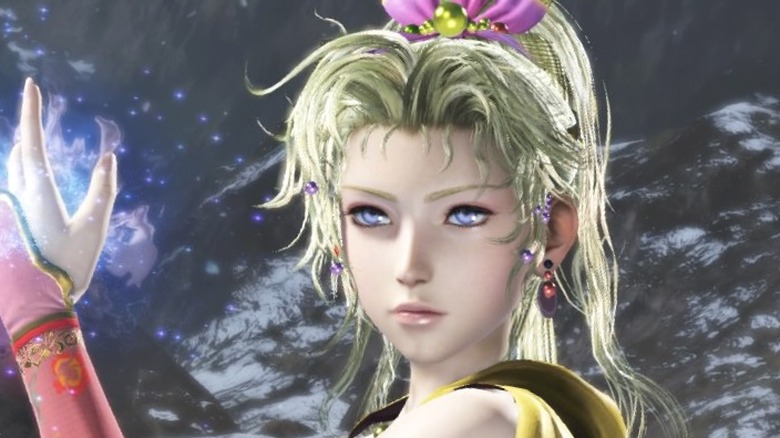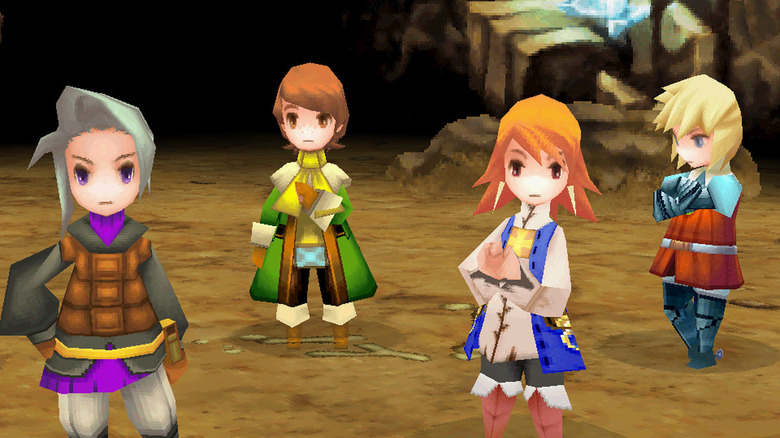The Real Reason Final Fantasy 3 Was Different In The US And Japan
If you're just getting into the "Final Fantasy" series, the good news is there are many games to choose from. You have everything from the beloved "Final Fantasy 7" to some of the strangest spin-off games. Like a lot of gaming franchises, there were even canceled "Final Fantasy" titles no one got to play. And just like there were unreleased games, there were some that were not localized when they originally launched.
In the United States, gamers were treated to "Final Fantasy" on the Nintendo Entertainment System. American fans would not see a sequel on that console, but instead would receive a follow-up on the Super Nintendo. After "Final Fantasy 2," "Final Fantasy 3" came out on the same system. Oddly enough, the next game to launch was "Final Fantasy 7." What happened?
There was a major difference between the "Final Fantasy 3" that released in the States and the one that came out in Japan. This is the reason why the two were so different.
The true Final Fantasy 3 did not originally come out in the US
In the United States, it wasn't "Final Fantasy 4" through "6" that gamers missed out on — it was "2," "3," and "5." What published as "Final Fantasy 2" and "3" were actually "4" and "6." Why weren't the first two sequels ported to the U.S.?
In 2007, Rob Fahey of Eurogamer conducted an interview with Hiromichi Tanaka, whose work was instrumental in bringing the original "Final Fantasy" trilogy to life. In their conversation, Tanaka explained that, "Final Fantasy 3" came out at a time when the Super Famicom (Super NES in the U.S.) had just been released in Japan. There was a lot of uncertainty surrounding the presence of two console generations on the market, and the advanced graphical capabilities forced the team to focus all of its resources on adapting to the newer technology. As a result, there simply wasn't anyone available to localize "Final Fantasy 3."
American audiences would eventually get to experience "Final Fantasy 3" in the form of a 3D Nintendo DS remake (via Kotaku). Though it would take 16 years to reach the U.S., it was a success with fans and critics alike.


